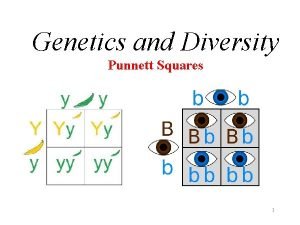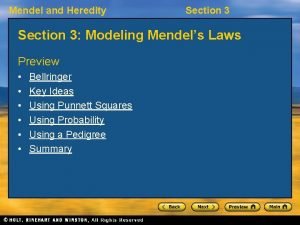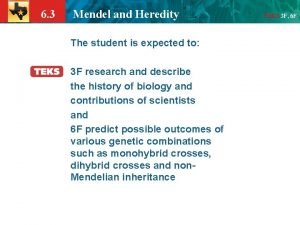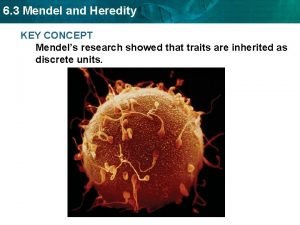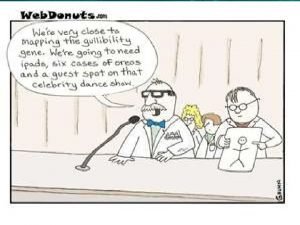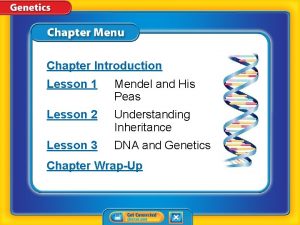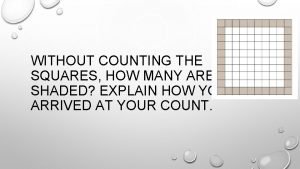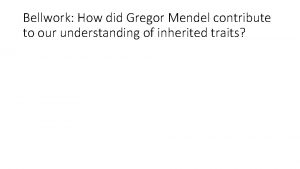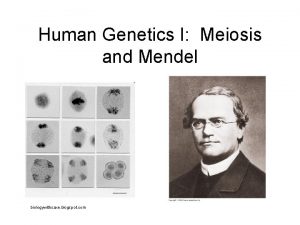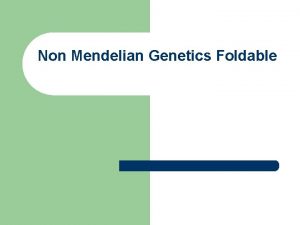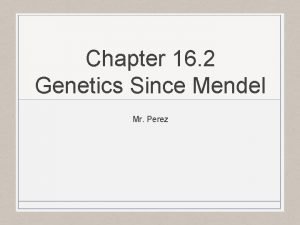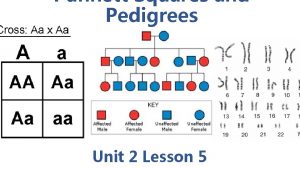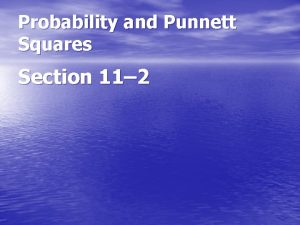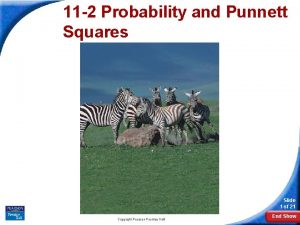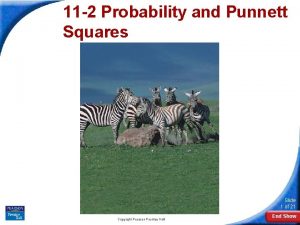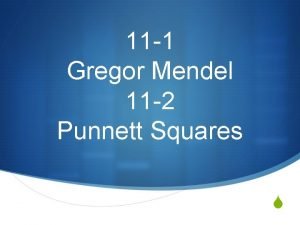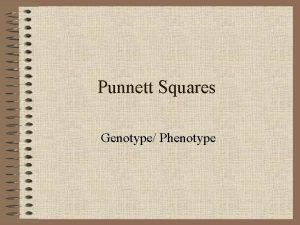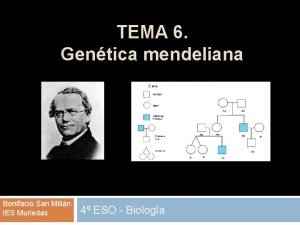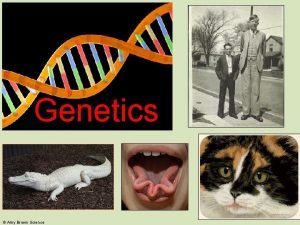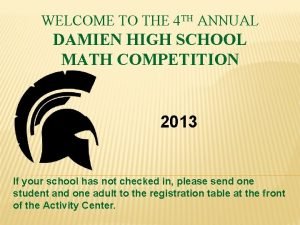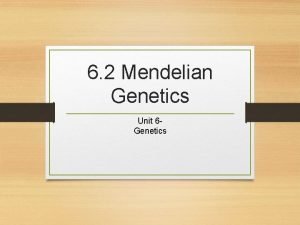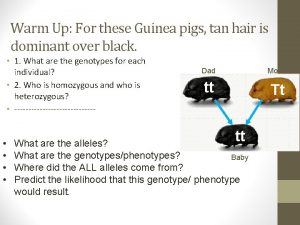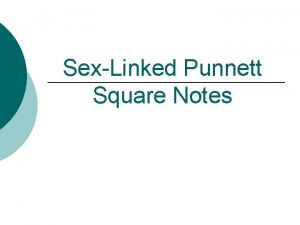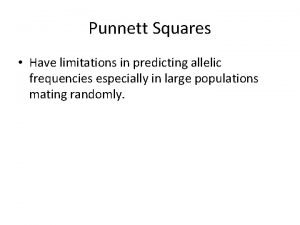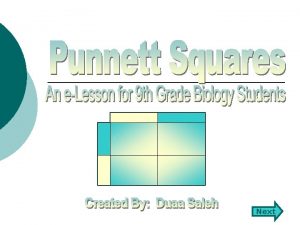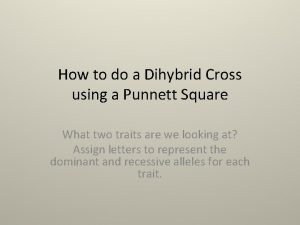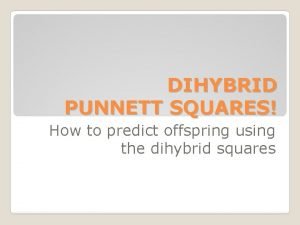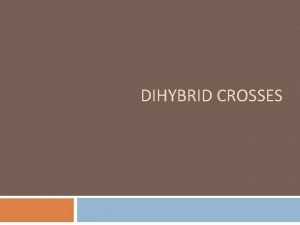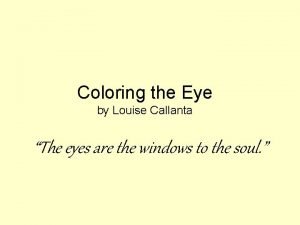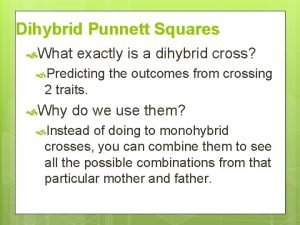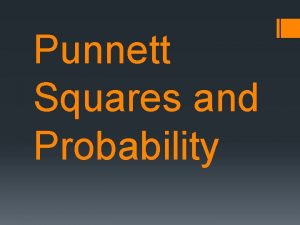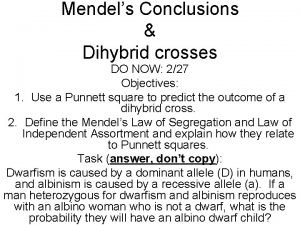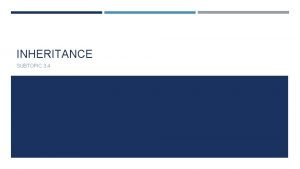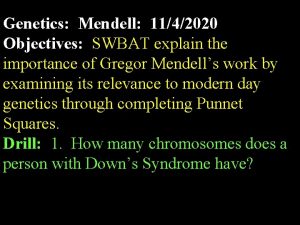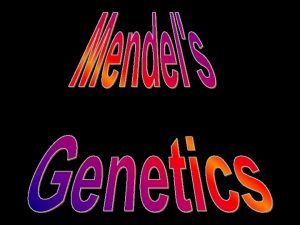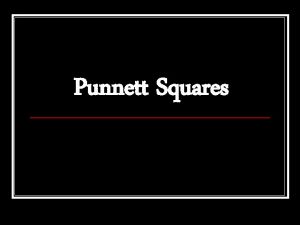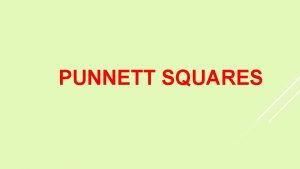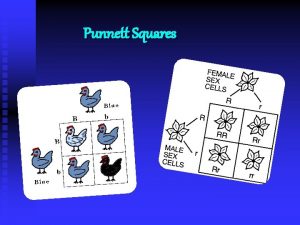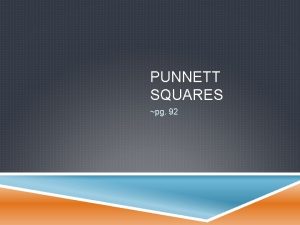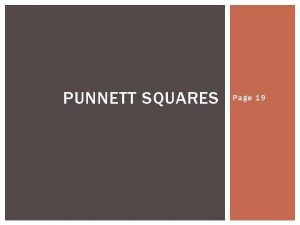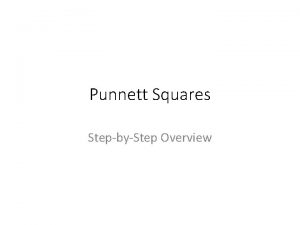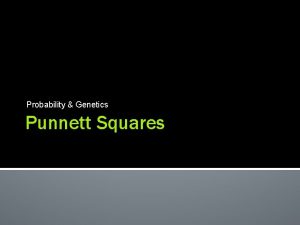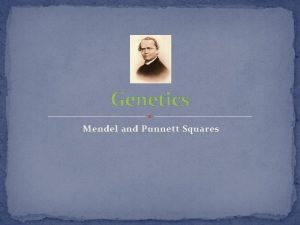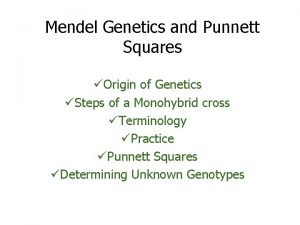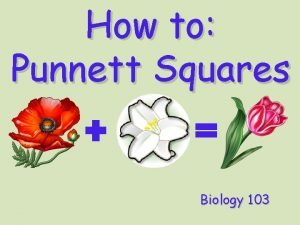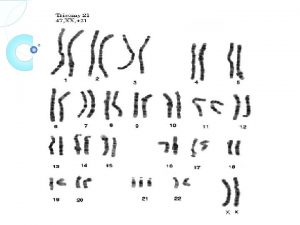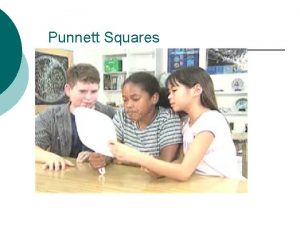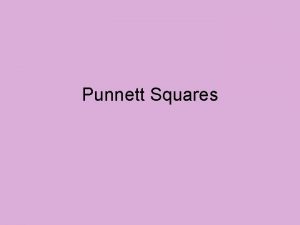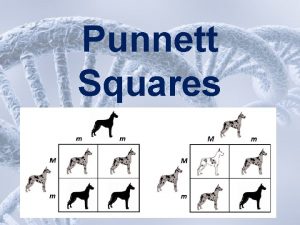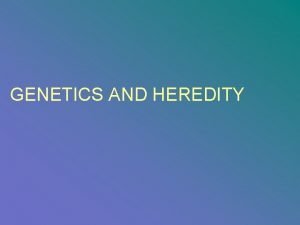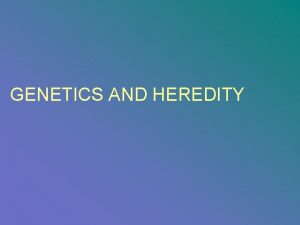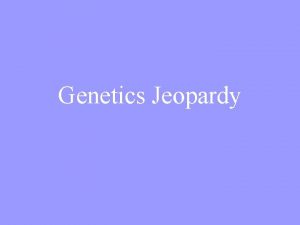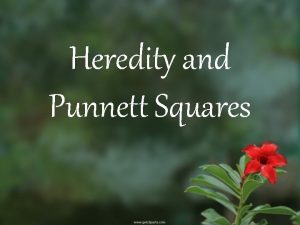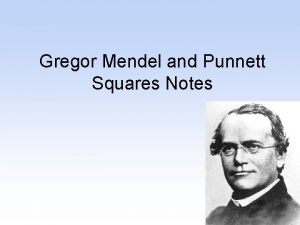Genetics Heredity Mendel and Punnett Squares Standard S










































- Slides: 42

Genetics &Heredity: Mendel and Punnett Squares

Standard: S 7 L 3 Students will recognize how biological traits are passed on to successive generations. a. Explain the role of genes and chromosomes in the process of inheriting a specific trait.

Heredity • The passing of traits from parents to offspring. • Traits- The characteristics of an organism. **(any description)

Alleles • A different form of a gene. • One allele may code

Parents You get one allele from mom and one from dad.

Genetics The study of how traits are inherited through the interactions of alleles.

Gregor Mendel • The first to study how traits were passed from one generation to the next. • He studied pea plants.

Mendel’s Experiments • Mendel crossed a pure breeding white flowered plant with a pure breeding purple flowered plant. • He got all purple flowers in the offspring. • BUT, then he crossed two of the second generation purple flowers and he got ¾ purple flowers and ¼ white flowers!


So…. what does that mean? From the results of his second cross, Mendel determined that one allele was dominant and the other allele was recessive.

Dominant vs. Recessive • Dominant Alleles- An allele that covers, or dominates another allele. **the dominant allele is ALWAYS expressed when a dominant allele is present. • Recessive Allele- An allele that is covered, or hidden by another allele. **TWO recessive alleles must be present for the recessive allele to be expressed.





Representing Alleles • Letters! • Upper case= dominant alleles. (R) • Lower case =recessive alleles. (r)


Genotype vs. Phenotype • Genotype - An organism’s genetic makeupcombination of alleles that determine the organism’s phenotype. • Phenotype - Outward



Punnett Squares • A tool to predict the probability of certain traits in offspring. • Punnett squares show the different ways alleles can combine.

Homozygous • If the two alleles that you get from your mom & dad are the same, it is homozygous (RR, rr)

Heterozygous • An organism that has two different alleles for a trait is called heterozygous. (Rr)



Example: • The tongue rolling allele is R. • R is dominant • r is recessive

• Your mom is homozygous dominant for the tongue rolling gene. • Her genotype is RR

• Your dad is heterozygous for the tongue rolling gene. • His genotype is Rr

Probability • What is the probability that you will be able to roll your tongue? • Do a Punnett Square!

Making a Punnett Square • To set up a Punnett Square, draw a large square. • Then, divide it into four equal sections.

Dad’s Alleles go on top Mom’s Alleles go on the side

R R R Eggs r Sperm

R r Sperm R RR Rr Eggs

Your genotype could be: – 50% RR- Homozygous Dominant – 50% Rr- Heterozygous Your phenotype would be: – 100% Tongue Roller – 0% No Tongue Roller

Hybrid vs. Purebred • Hybrids=Heterozygous- Have two different alleles for a gene: Rr • Purebreds=Homozygous- Have the same allele for a gene: RR or rr

Let’s Do Another One! • The Big Nose Allele is N. • Big Nose is N • Little nose is n

• Mom is Heterozygous for Big Nose: Nn • Dad is Heterozygous for Big Nose: Nn • What is the chance you’ll have a big nose? Do the genetic cross to find out!

N n Sperm N NN Nn nn Eggs

What is the genotype? • 25% NN- Homozygous Dominant • 50% Nn- Heterozygous • 25% nn- Homozygous Recessive

What is the phenotype? • 75% Big Nose • 25% little nose

Incomplete Dominance When the offspring of two homozygous parents show an between” phenotype. “in-

Example: • Purebred white flowers • Purebred flowers • Makes “inbetween” pink colored flowers
 Genotype punnet square
Genotype punnet square Section 3 mendel and heredity
Section 3 mendel and heredity Section 3 mendel and heredity
Section 3 mendel and heredity Section 3 mendel and heredity
Section 3 mendel and heredity Section 3 mendel and heredity
Section 3 mendel and heredity Section 3 mendel and heredity
Section 3 mendel and heredity Genetics is the study of heredity
Genetics is the study of heredity Chapter 17 the beginning of the life cycle
Chapter 17 the beginning of the life cycle Mendel and his peas lesson 1
Mendel and his peas lesson 1 Youcubed squares and more squares answers
Youcubed squares and more squares answers Pp x pp
Pp x pp Mendel genetics
Mendel genetics Chapter 11 biology test
Chapter 11 biology test How did gregor mendel contribute to genetics
How did gregor mendel contribute to genetics Mendel genetics
Mendel genetics Mendel's genetics foldable
Mendel's genetics foldable Genetics since mendel
Genetics since mendel Pedigrees and punnett squares
Pedigrees and punnett squares Section 11-2 probability and punnett squares
Section 11-2 probability and punnett squares 11-2 probability and punnett squares
11-2 probability and punnett squares Section 11-2 probability and punnett squares
Section 11-2 probability and punnett squares Gregor mendel punnett square
Gregor mendel punnett square Punnett square phenotype
Punnett square phenotype Imagen de herencia
Imagen de herencia Mendel's law punnett square
Mendel's law punnett square 4 squares = 5 9 squares =
4 squares = 5 9 squares = Mendel was a
Mendel was a Pea plant punnett squares worksheet answer key
Pea plant punnett squares worksheet answer key Sex linked punnett square
Sex linked punnett square Limitations of punnett squares in large populations
Limitations of punnett squares in large populations Tt x tt punnett square
Tt x tt punnett square Dihybrid cross foil method
Dihybrid cross foil method Foil method biology
Foil method biology Foil punnett squares
Foil punnett squares Hazel eyes punnett square
Hazel eyes punnett square Dihybrid punnett squares
Dihybrid punnett squares Sex linked traits punnett square
Sex linked traits punnett square X linked dominant inheritance punnett square
X linked dominant inheritance punnett square Combination of alleles
Combination of alleles Punnett square dihybrid cross
Punnett square dihybrid cross Punnet squares
Punnet squares What is a punnett square
What is a punnett square Homozygous punnett square
Homozygous punnett square
